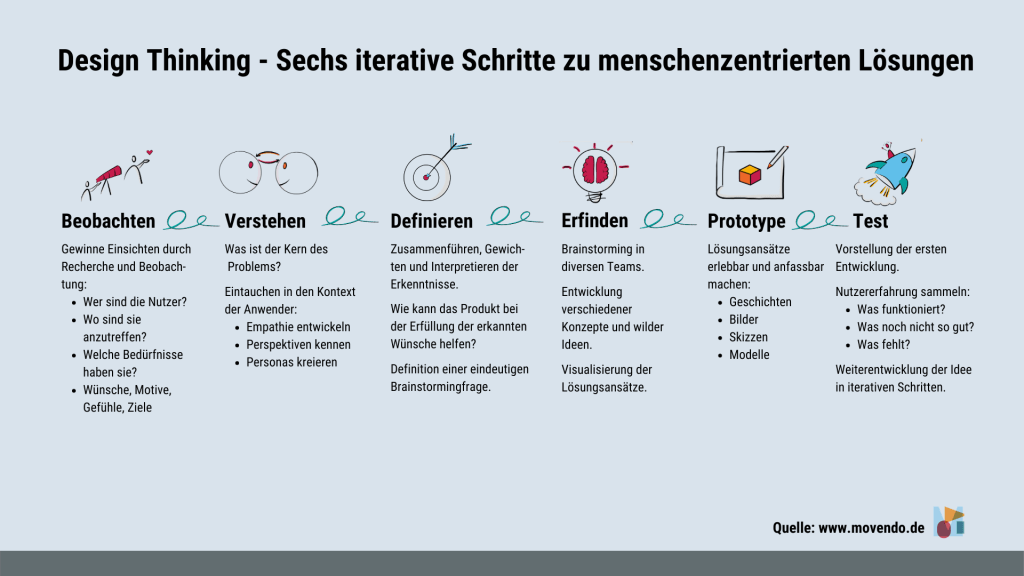Created by Flora Luginsland
#favouritemodel No. 5 – Design thinking uses iterative, rapid feedback to develop human-centered solutions

Design thinking is an agile methodology that supports creative processes for finding solutions. It can also be described as a mindset that follows a human-centered school of thought.

Five principles are essential for design thinking:
Focus on people: Empathy for the person or people for whom a solution is being developed is fundamental to successful solution design. Above all, this also includes early feedback from users.
Experimenting and prototyping: Prototyping is not just a way to validate ideas; it is an integral part of the innovation process. We experiment, build prototypes to think, possibly fail and learn from them.
Doing before thinking: The name “design thinking” is misleading; it is more about doing than thinking. Design thinking clearly favors doing and making over thinking and discussing.
Show, don’t tell: Creating experiences, using vivid visuals and telling good stories are at the heart of the design thinking process. Sensory perception conveys ideas and visions more effectively and meaningfully than any text could.
Power of iteration: Only through iteration can we learn and further refine our solution design. This is why the process requires as many cycles as possible – i.e. interview twice, sketch twice and test twice with the partner. Iteration is a key success factor for useful and user-oriented results.
The design thinking process can be applied in a variety of contexts and use cases. Be it the design of new products and services, the development of new business models, the definition of new ways of working together or the development of necessary skills for a high-performance team. The fundamental starting point for a successful design process is the problem statement, which succinctly summarizes the challenge the design process wants to tackle.
How can my #favoritemodel help you?
If you are working on a problem that you can’t seem to solve, ask yourself:
- What exactly is my problem? Is it formulated as a problem and as a sentence? Or is it more of a question? Does it describe exactly the challenge I am facing? If not, take some time to make it more precise. The more precise this statement is, the easier the next steps will be.
- Who could help me to sharpen the statement? Whose point of view is decisive for the definition of the problem statement? Involving others usually broadens the perspective and helps to sharpen the statement.
- Who will benefit from the solution to the problem? Who is your customer or the target group for whom you are designing a solution? Having a clear view of your customer and focusing on them will increase the success rate of your solution design.
If you are working on a solution to a particular problem, ask yourself:
Do I include enough different perspectives? Do I collect enough feedback? Do I dare to offer 50-80% solutions to gather early feedback? Do I allow enough iterations to shape the solution? Why not? What is holding me back? Soliciting feedback early is scary because you put yourself at the mercy of others’ judgment. In the long run, it pays off as they iteratively enrich your solution.




